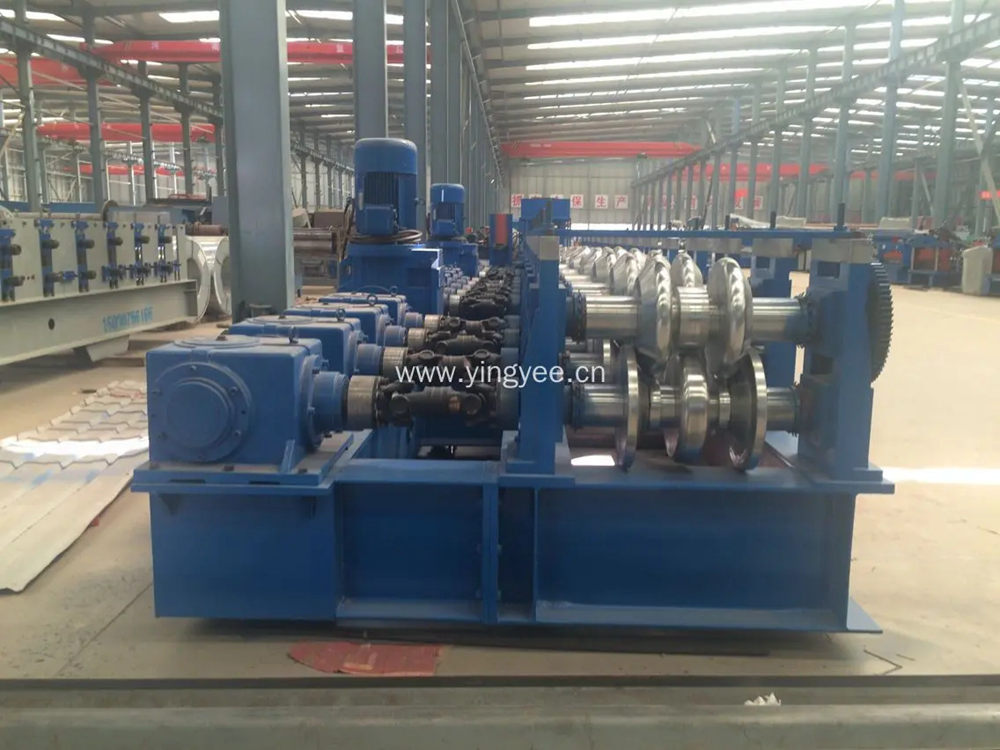
Guardrail Block Spacer Cold Bending Machine A Comprehensive Overview
In the transportation infrastructure sector, the safety of road users is paramount. One of the critical components in achieving this safety is the installation of guardrails. Guardrail systems are designed to protect vehicles from leaving the roadway and to absorb the impact of collisions, thus providing an added layer of safety. However, the efficiency and effectiveness of these systems heavily depend on their installation, which requires various tools and machinery. Among these tools is the guardrail block spacer cold bending machine, a specialized piece of equipment that plays a crucial role in ensuring the accuracy and durability of guardrail systems.
What is a Guardrail Block Spacer?
Before delving into the functionalities of the cold bending machine, it’s essential to understand the guardrail block spacer. Block spacers are structural components that help maintain the correct distance between different sections of the guardrail. They ensure that the rails are aligned properly and can withstand impacts while maintaining their integrity. The proper installation of these spacers is vital for the overall performance of the guardrail system, as misalignment can lead to failure in critical situations.
The Role of Cold Bending in Guardrail Fabrication
Cold bending refers to the process of shaping materials at room temperature without the need for heating. This method is particularly beneficial for materials like steel and aluminum, which are commonly used in guardrail systems. Cold bending allows for precise control over the shaping process, reducing the risk of damage that could occur with hot bending techniques. The result is a more reliable and robust product that can withstand the rigors of weather and vehicle impact.
How the Guardrail Block Spacer Cold Bending Machine Works
The guardrail block spacer cold bending machine is engineered to automate the bending process, enhancing efficiency and minimizing errors. Here’s how the machine typically operates
1. Material Loading The operator loads raw materials—usually steel strips or bars—into the machine. These materials are cut to the required lengths based on the design specifications of the guardrail.

2. Programming The machine is programmed with the specific bending angles and dimensions required for the block spacers. Modern machines often feature computerized controls that allow for precise adjustments, ensuring consistent quality across all spacers produced.
3. Bending Process Once the material is loaded and the machine is set up, the bending process begins. The machine utilizes hydraulic or mechanical systems to bend the material at predetermined angles without compromising its structural integrity.
4. Quality Inspection After the bending process, each spacer is subject to a quality inspection to ensure that it meets the required specifications. This can include checking the dimensions, angles, and overall finish of the product.
5. Finishing Finally, the spacers are processed for any additional finishing touches, such as coating for corrosion resistance, before they are shipped out for installation.
Advantages of Using Cold Bending Machines
Utilizing a cold bending machine for the production of guardrail block spacers offers several significant advantages
- Precision Automated processes ensure high accuracy in dimension and angle, leading to better alignment during installation. - Efficiency The cold bending machine can produce spacers at a faster rate compared to manual methods, meeting large-scale demands more effectively. - Cost-Effectiveness By reducing material waste and minimizing labor costs, companies can optimize their production budgets. - Durability Cold bending maintains material strength, resulting in spacers that are less prone to deformation under stress.
Conclusion
As road safety continues to be a critical concern worldwide, the role of advanced machinery in infrastructure development cannot be overstated. The guardrail block spacer cold bending machine exemplifies how technology can enhance the safety and reliability of guardrail systems. By producing high-quality components efficiently and accurately, this machine supports the creation of safer roadways, ultimately contributing to the well-being of all road users. As we look to the future, continued innovation in this field will undoubtedly lead to even greater enhancements in road safety and infrastructure efficiency.